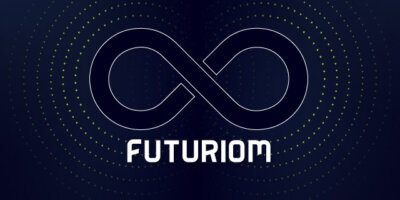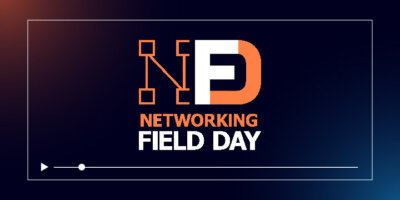Infrastructure as Code
Incorporate CI/CD pipelines and DevOps practices into network automation and orchestration initiatives.
The Leading Edge of Network Automation & Orchestration is Infrastructure as Code
With Continuous Integration/Continuous Delivery (CI/CD) having transformed the software development process, network teams are now looking to incorporate CI/CD practices into their network automation and orchestration initiatives to gain greater velocity and improve delivery. Network engineers are beginning to leverage repositories, pipelines, and other tools to accelerate development, testing, and implementation of network automations and orchestration workflows.
Innovative teams are deploying pipelines across their network domains to streamline their network configuration lifecycle activities. They are using repositories like Git to create config code branches and maintain versions, using CI pipelines to execute automated test activities, and utilizing CD techniques to reduce risk during production deployment of the network code.
Integrating CI/CD + Network Automation for a Common Pipeline
How Itential Is Enabling Infrastructure as Code for Network Automation & Orchestration
NetOps Infrastructure as Code via Itential Orchestration Workflows
NetOps teams can design, build, and publish orchestrations using the Itential Platform’s low-code and no-code workflow capabilities.
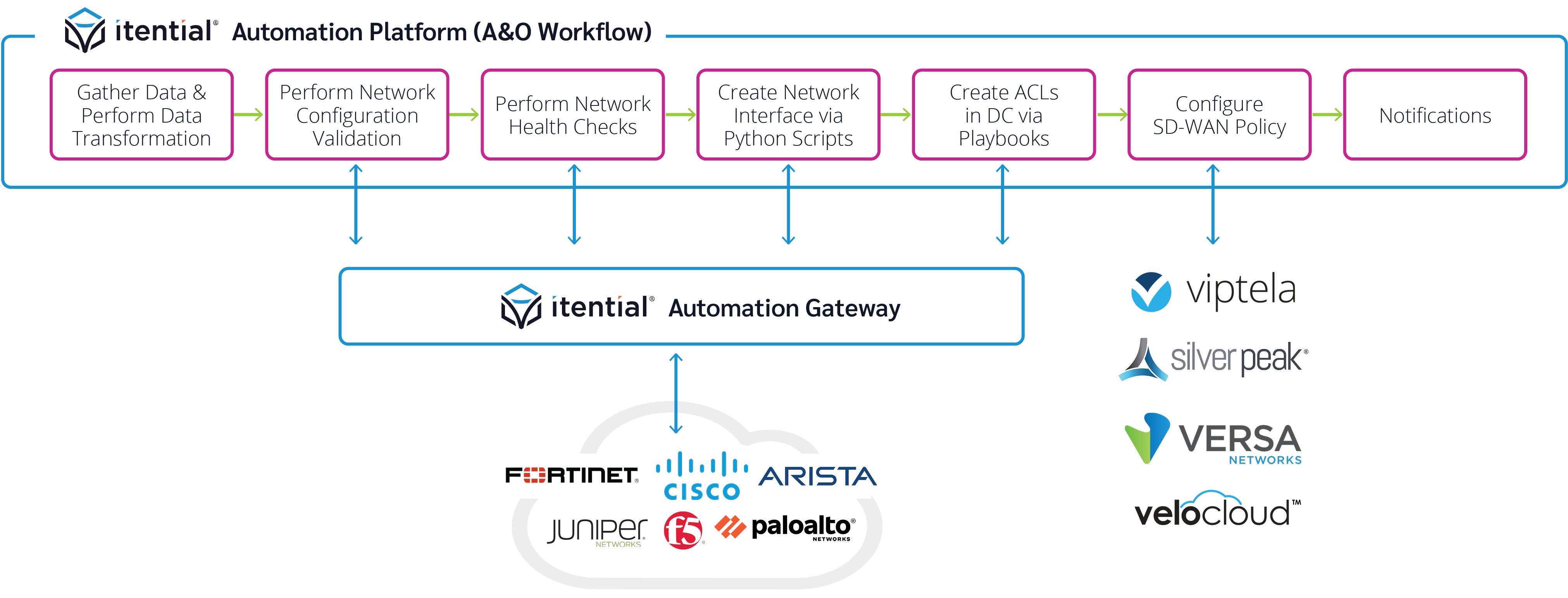
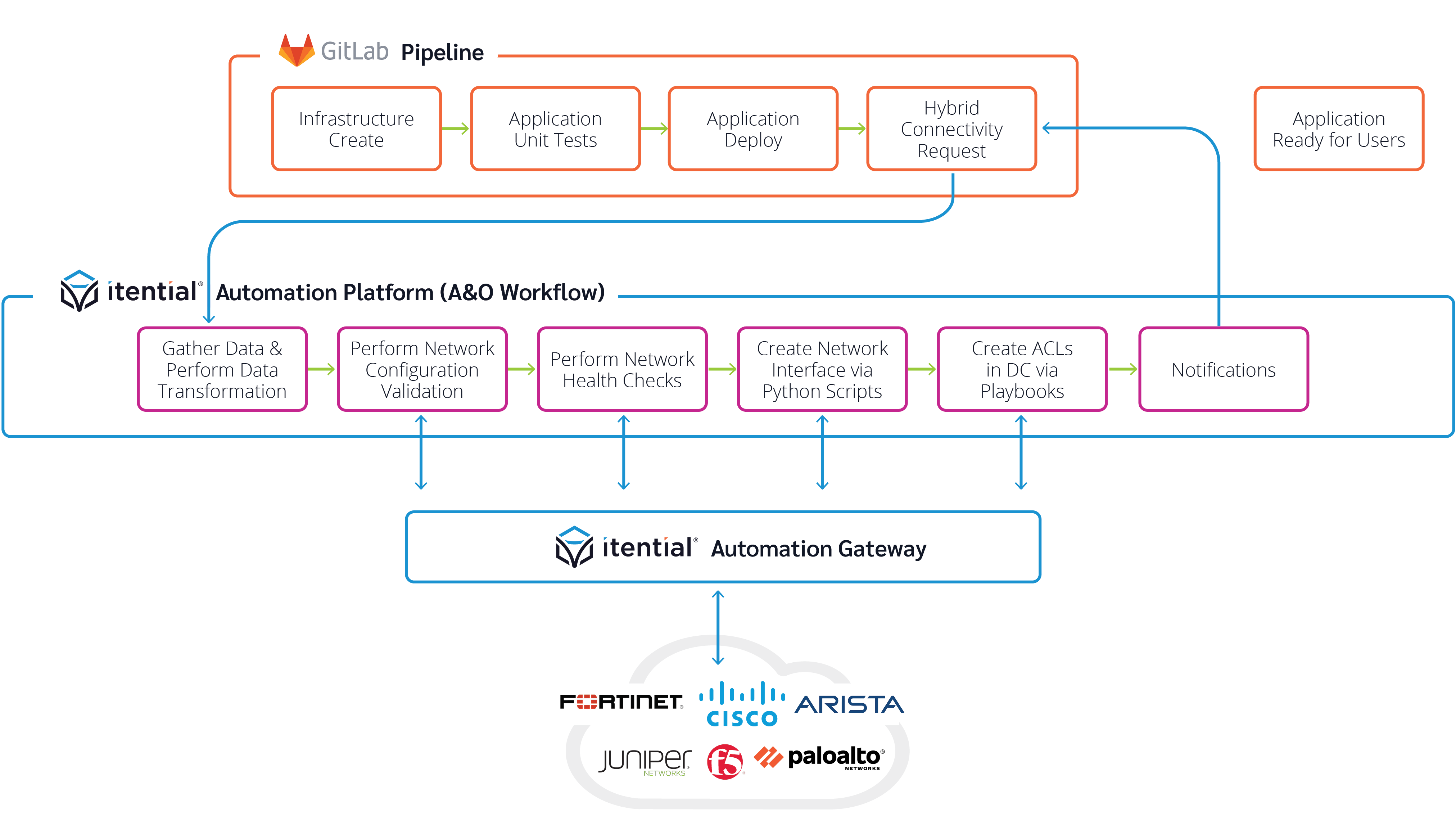
NetDevOps Infrastructure as Code via CI/CD Pipelines with Itential
Developers can incorporate pipeline calls to the Itential Platform to execute automated/orchestrated network changes during testing and deployment phases.
Additionally, Itential assets like workflows, templates, forms, and data transformation can be managed via CI/CD pipelines for code control, versioning, and testing of network automations and orchestrations.
CI/CD Pipelines Orchestrate Network Automation via Itential’s APIs
Leverage CI/CD pipelines to consumes atomic network capabilities and features from the Itential Platform.
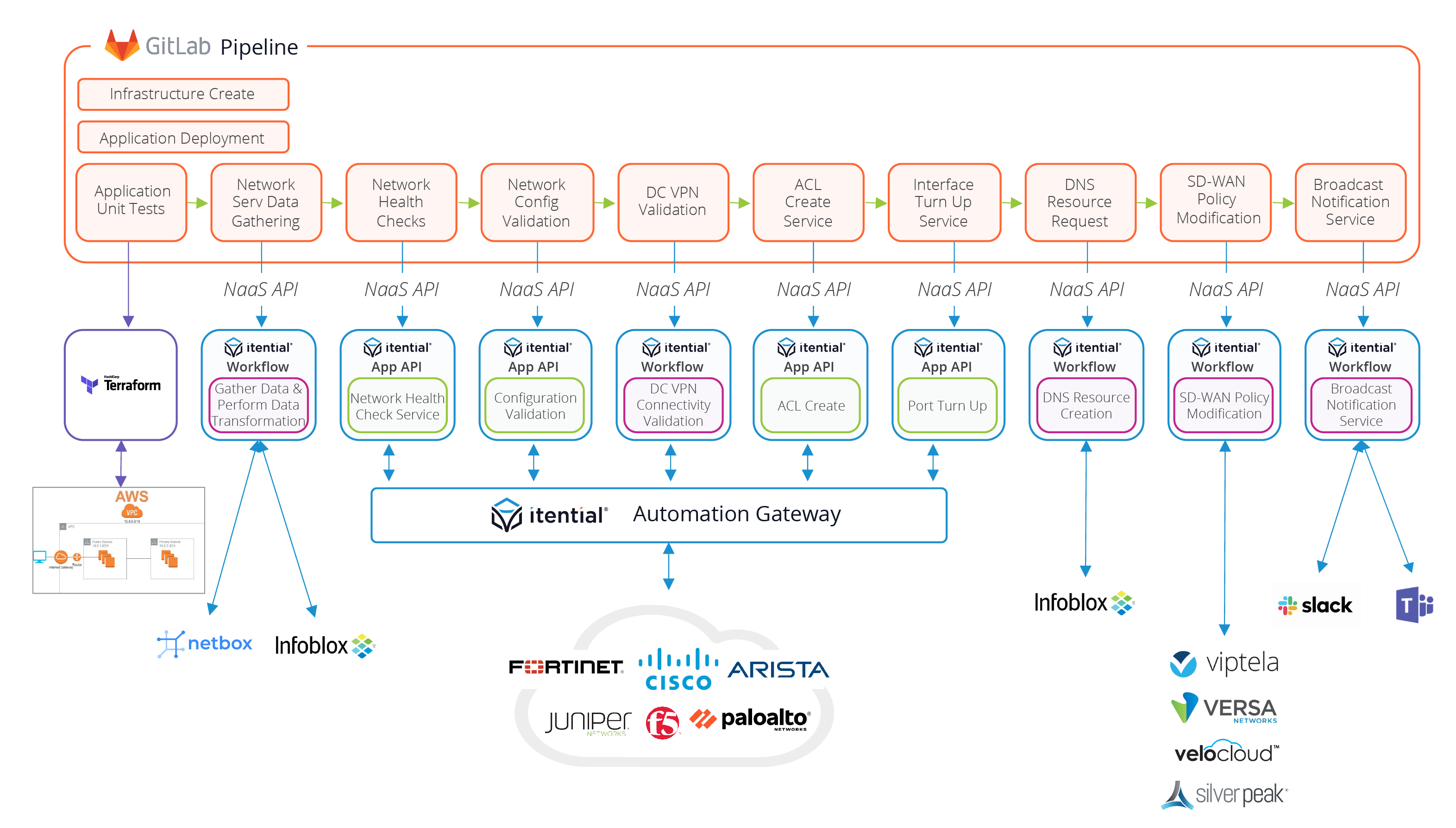
Itential NetDevOps Pipeline for Network Infrastructure as Code
At Itential, we’ve been working to overcome these challenges for our customers. To help them embrace Network Infrastructure as Code methodologies, we have built a platform to better enable network engineers to achieve these goals. Our platform aligns with software engineering-oriented functionality like API exposure and ability to integrate with a wide range of CI/CD tools, while staying flexible for network engineers no matter their level of software development and scripting skill. To do that, we are continually evolving our approach towards a NetDevOps Pipeline for Network Infrastructure as Code.
Itential’s NetDevOps Pipeline Capabilities
Build
Use the power of the Itential Platform to automate the generation of the NIaC payloads.
- Dynamically render configurations from a library of expert-built templates. TemplateIDE >
- Combine reusable chunks of configuration to create composite configurations.
- Transform data from one format into another.
- Run optimizers to eliminate redundant or poorly designed config.
- Utilize integrations to submit code changes to repositories and interact with pipeline toolchains.
Test
The Itential Platform can enhance the NIaC pipeline test stage to improve quality, identify problem areas, and automate a wide range of testing scenarios utilizing native Itential functionality along with test functionality provided by tools integrated with Itential.
- Simulate the change before you make it.
- Compare simulation outputs to known desired outcomes.
- Check to see if your change affects any pre-existing functionality.
Validate
Itential provides a range of native capabilities and Pre-Built Workflows to perform validation prior to production deployment.
- Check that a configuration is error free before you deploy it to a device. Config Validator >
- Run a security scan to see if you’re running compromised software.
- Compare config changes against gold standard configuration rules to confirm compliance of the change
- Leverage Itential integration capabilities to interact with tools such as Batfish to provide additional levels of validation.
Deploy
Deploy your infrastructure changes to the network.
- Leverage tools like Ansible and Terraform to push changes. Automation Gateway >
- Update operational support systems to stay in sync with your network changes.
- Keep track of your changes by tagging and versioning them when you deploy.
Frequently Asked Questions
What does “Network Infrastructure as Code” mean in Itential’s approach?
It means expressing network changes in declarative code (Terraform, OpenTofu, Ansible) with full version control, so infrastructure can be provisioned, validated, and maintained using the same modern practices DevOps teams use for cloud.
How does Itential work with Terraform, Ansible, or OpenTofu?
Itential doesn’t replace them — it orchestrates them. Existing plans and playbooks are wrapped into governed workflows, so they can be executed with pre/post checks, approvals, rollback, and logging.
How is configuration drift handled in a Network IaC model?
Drift detection continuously compares actual device state against the declared desired state. If drift is found, Itential can remediate automatically or trigger a governed workflow for correction.
What risks exist with DIY IaC approaches?
Script sprawl, inconsistent versions, poor auditability, and unsafe changes when IaC runs outside of change management. Itential provides guardrails and evidence so IaC is safe to run in production.
Can infrastructure as code be integrated into CI/CD pipelines?
Yes. IaC workflows in Itential can be triggered by Git commits, pipeline steps, or webhooks, enabling continuous delivery of network infrastructure changes.
How does this model support audits and compliance?
Every IaC execution is logged with full traceability. Golden configs, validations, and policies are enforced in workflows, producing evidence that simplifies audits.
Who benefits from Network IaC in practice?
Network engineers get reliable, repeatable changes. Cloud and DevOps teams get APIs and GitOps workflows. Security and compliance teams get validated, auditable infrastructure state.
What kinds of use cases are best for Network IaC?
Common ones include new VPC or VLAN provisioning, firewall/security policy changes, device onboarding, software upgrades, and hybrid connectivity (on-prem ↔ cloud).
- Gartner’s Recommendations for I&O Leaders to Accelerate Infrastructure Delivery with Automation & Orchestration
- CI/CD for Networking: How to Treat Network Infrastructure as Code
- How to Enable Teams to Share a Common Data Source for Network Automation with Itential’s GitHub Integration
- How Security, Application, & Network Teams Can Reap the Rewards of a Centralized Orchestration Platform
- NetDevOps, Self-Service, & Evolving the Network Change Process to be Consumable by Everyone
- 3 Capabilities Every Network Orchestration & Automation Platform Should Provide
- GigaOm’s 2024 NetDevOps Radar Report Names Itential an Outperformer
- The Shift Left Movement & What it Means for Networking
- Using CI/CD to Accelerate Network Automation & Orchestration Initiatives
- Enabling NetDevOps Through CI/CD Pipeline Integration with Itential
- How To Create & Deploy New Applications by Integrating CI/CD with Network Change Processes
- Itential Platform: Features & Capabilities Overview
- Network Automation & Orchestration Maturity Model
- Futuriom 50: Top Cloud Trends & Private Companies 2024
